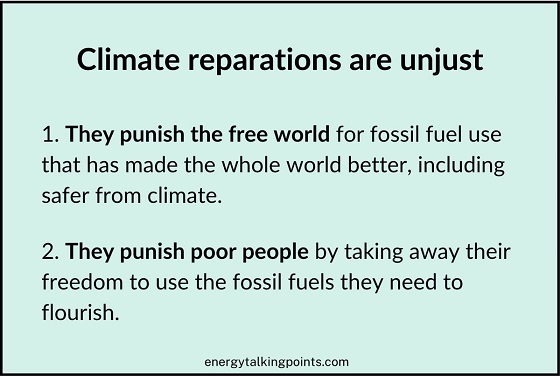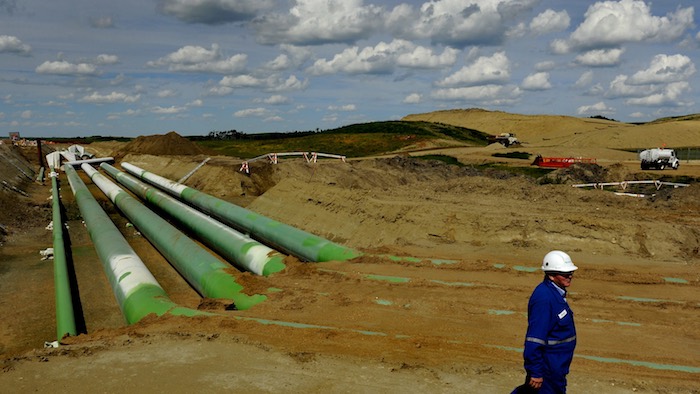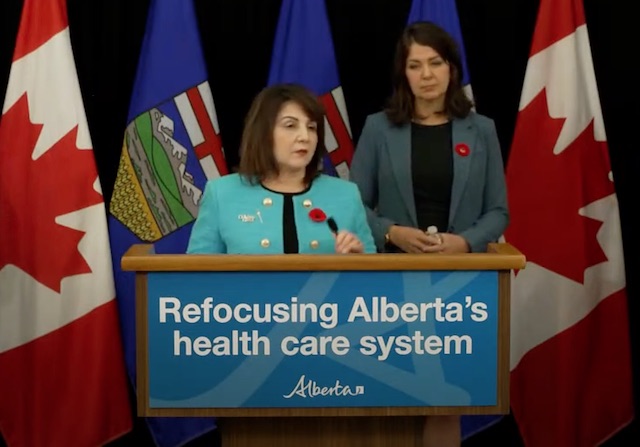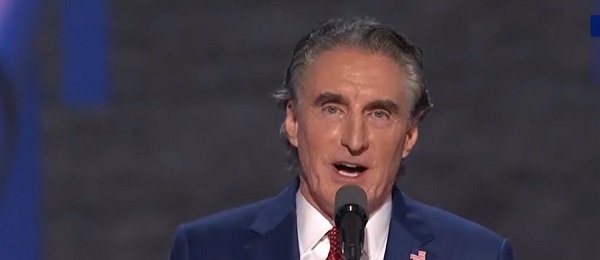Alberta
Alberta’s close brush with blackouts stiffens Moe’s resolve

From the Frontier Centre for Public Policy
“We will not risk plunging our homes, schools, hospitals, special care homes and our businesses into the cold and darkness because of the ideological whims of others.”
Alberta’s close brush with possible rolling blackouts stiffens Moe’s resolve to keep the lights on.
Moe reiterates: “We will not attempt the impossible when it comes to power production”
The past weekend proved to be a close-run thing for the Alberta electrical grid, and Saskatchewan Premier Scott Moe is making statements resolving he won’t allow that to happen here.
Specifically, after having nearly completely divested itself of coal-fired power production, Alberta’s dramatic buildout of wind and solar proved impossible to keep the lights on in that province when the chips were down and temperatures hit -35 C, or worse.
“In Saskatchewan, we will not attempt the impossible when it comes to power production in our province,” Moe said in a post on X and other social media the evening of Monday, Jan. 15.
“We will not risk plunging our homes, schools, hospitals, special care homes and our businesses into the cold and darkness because of the ideological whims of others.
“To support the ongoing power demands across western Canada, Boundary Dam 4 has been restarted to ensure families can continue to keep the heat on. Net zero by 2035 is not only impossible, it’s irresponsible as it would leave Saskatchewan and Western Canadian families freezing and in the dark.”
It was in response to the extraordinary events that occurred in Alberta over the weekend, in which Saskatchewan played a key part. And it was also a tacit acknowledgement that as much as SaskPower’s been trying to wean itself off coal, it just can’t do it yet. We still need it to keep the lights on.
The Alberta Electric System Operator (AESO) declared four “grid alerts,” over four days in a row, starting the afternoon of Friday, Jan. 12. Desperately cold temperatures drove up demand for power, just as the same temperatures reduced wind power generation to nothing at times, and close to nothing for most of the weekend. And since the mass of cold air stretched from the Yukon to Texas, every grid operator in between was in the same boat – high demand but short supply. The Southwest Power Pool, which incorporates parts of 14 states from south of Saskatchewan to the Texas Panhandle, as well as Texas grid operator ERCOT, all put out various forms of alerts suggesting their clients reduce electrical consumption.
Staring into the abyss
The first three of Alberta’s grid alerts ran from mid-afternoon until late evening, but the fourth occurred for an hour on Monday morning, as the workweek began.
The second of those grid alerts turned out to be the most significant. On Saturday, Jan. 13, Alberta came within a half-hour of rotating blackouts, an Alberta Electric System Operator spokesperson told CBC News on Jan. 15, confirmed by Alberta Affordability and Utilities Minister Nathan Neudorf the same day.
Indeed, the province stood at the brink of the abyss Saturday night, as rotating blackouts would have impacted different areas of the province for 20 to 30 minutes at a time, as temperatures ranged from -30 to -45 C, depending on where you were in the province. As the province’s grid-scale batteries neared depletion, and there was nothing left to call upon, the AESO and provincial government put out an emergency alert to all cellphones and TV screens, asking Albertans to shut off and unplug everything they could, from electric vehicle chargers to ovens to bathroom fans.
SaskPower ups its game
Alberta had run out of reserves, and with British Columbia unable to provide much more in the way of additional power, and Montana unable provide much at all, Saskatchewan’s Crown utility SaskPower responded, by sending 153 megawatts westward.
And that, in itself, was extraordinary, because limits were pushed to provide Alberta with as much as possible on the intertie between the two provinces.
SaskPower spokesperson Joel Cherry told Pipeline Online by email, “One hundred fifty-three megawatts is the interconnection’s maximum capacity, but it has been derated to 90 megawatts for the past several months because of ongoing work at a interconnection station at the border. AESO and SaskPower Grid Control have agreed to temporarily increase the transmission capacity to make the extra 63 MW available to Alberta when they declare energy alerts.
Contingency reserve had run out
Generally speaking, power needs to be consumed at the instant its produced. There is very little in the way of grid-scale storage in the Canadian electrical grid, although Alberta has built 10 grid-scale batteries totaling 190 megawatts capacity. All of that capacity would come into play Saturday evening.
Grid operators must maintain a small amount of excess capacity at all times, known as a “dispatched contingency reserve” (DCR) The North American Electric Reliability Corporation (NERC) standard is to maintain at least 4 per cent DCR. That’s because if the DCR runs out, all sorts of bad things happen, with voltage drops and frequency variance which then can lead to cascading brownouts, including additional power generating units tripping off and whole areas going without power.
With demand hovering around 11,800 megawatts, four per cent would have been around 472 megawatts DRC. Instead, for the better part of an hour, the DCR was 20 megawatts, or 0.1 per cent, a razor thin margin. The extra 63 megawatts SaskPower sent in part meant the difference between rotating blackouts or not.
In a very real way, it was payback for Alberta’s weeks-long help for SaskPower during the outage of the Poplar River Power Station at Coronach, Saskatchewan. For weeks on end, Alberta supplied Saskatchewan with around 150 megawatts for parts of the day to keep the lights on in this province.
BC played critical role, too
On any given day, imports and exports of power between Alberta and British Columbia will often run up to 600 megawatts going either direction. But with BC also in the deep freeze, it didn’t have much to give at various points during the weekend, including parts of the crucial Saturday evening. Indeed, around the time the grid alert was first sounded on Saturday, Alberta was still exporting 38 megawatts to British Columbia, according to X bot account @ReliableAB, which posts hourly data from the AESO on the status of the Alberta grid.
For a few hours, BC Hydro was able to ramp up its exports to Alberta during the crucial time. At 5:39, they were exporting 251 megawatts to Alberta, nearly 100 megawatts more than Saskatchewan. For the next few hours they sent around 200 megawatts, but it was not enough, and the AESO sent out its alert.
Additionally, during the third grid alert on Sunday, British Columbia ramping up its power exports at a critical time saved the day, as the Alberta Dispatched Contingency Reserve had briefly hit zero. BC bumped its exports up to 496 megawatts while Saskatchewan contributed 153 and Montana nine. Those increased megawatts from British Columbia appeared to make all the difference on that day.
The cat came back, and so did Unit 4
While all of this was going on, SaskPower spent the weekend getting its coal fired power station Boundary Dam Unit 4 back into play. It’s been on cold standby for months. Officially, by federal regulations it was supposed to retire Dec. 31, 2021, but SaskPower has been forced to bring it back into service multiple times to fill a need, such as when Poplar River went offline last June. It was 139 megawatts that could have been used, but SaskPower has shown reluctance to bring it back into the game, as it were.
And that’s what Moe alluded to in his social media post, saying, “We will not risk plunging our homes, schools, hospitals, special care homes and our businesses into the cold and darkness because of the ideological whims of others.”
This was an oblique reference to the push by the federal government to shut down coal and natural gas-fired power generation by 2035, according to the proposed Clean Electricity Regulations, using similar words that Moe has expressed before. The federal preference is for more renewables, in particular wind and solar.
Several years ago, the federal government and Saskatchewan reached an equivalency agreement, recognizing the Boundary Dam Unit 3 Carbon Capture and Storage Project and therefore allowing a few more years operation out of other coal units. But to get that agreement, SaskPower had to agree to adding a further 3,000 megawatts of wind and solar by 2035, according to SaskPower president and CEO Rupen Pandya in an interview Sept. 25, 2023.
Pandya said, “When we signed the equivalency agreement with the federal government in 2014 to allow us to keep using coal to the end of 2030, part of that agreement required us to build out renewables in the province, so that we could operate coal assets, coal generators, past their end of life. And that’s what we’ve been able to do. And we continue to do. So, part of the build out of renewables that’s required as part of the equivalency agreement, that 3,000 megawatts that we need to put in place by 2035. I think 2,000 by 2030. A good tranche of that will be in that south central part of Saskatchewan around the Coronach. So we currently have in the market an RFP for 700 megawatts of wind and solar in the Coronach region, so it’ll will actually go into power, if all goes well with RFPs, in 2027.”
On a typical fall day, SaskPower’s total power demand hovers around 3,000 megawatts. On a cold winter day, it’s closer to 3,500 megawatts. But that’s before widespread adoption of electric vehicles, which the federal government is also trying to force upon Canadians.
Saskatchewan held up to the cold
SaskPower’s Joel Cherry told Pipeline Online on Jan. 15, “Saskatchewan’s system has held up during the extreme cold. We had no major issues.”
However, “Poplar River Power Station was operating at reduced capacity earlier in the weekend because of issues with coal supply. As of yesterday (Sunday) we are back to normal operations there.”
That means the reduced capacity occurred the same day Alberta was stretched nearly to the breaking point.
Asked if we lost a major unit, while Alberta was at the same time in crisis, what did we have for backup? Was there additional capacity available from Manitoba and/or Southwest Power Pool?” Cherry replied, “SaskPower has maintained adequate reserves to allow for the continued stability of the system even if we lost a large unit. We have also been importing from Manitoba and the SPP when available.
Collapse of wind
Major factors in Alberta’s power woes were the utter collapse of wind and solar power generation. Even at its best, solar power production during the day was around a third of maximum capacity.
Wind turbines started shutting down Thursday night as temperatures plummeted below -30 C, the temperature where cold brittle behaviour of materials risks catastrophic failure of the turbines. The three evening grid alerts all came on as the sun went down and the roughly 500 megawatts (of 1,650 megawatts capacity) faded with the setting sun. On Friday, Alberta’s wind generation fell to 6 megawatts at one point. It was minimal on Saturday. On Sunday morning, multiple times wind hit zero – not one megawatt from the 4,481 megawatts of wind generation capacity.
SaskPower’s Where Your Power Comes From webpage noted on Friday, Jan. 14, Saskatchewan’s 617 megawatts of grid-scale wind produced a 24-hour average of 21 megawatts. On Saturday, that number was 19. On Sunday, the average was 22 megawatts. Unlike the previous week, where there were seven days where wind in Saskatchewan hit zero power output, Jan. 12-14 did not have any periods of zero.
“We had four hours of less than 10 megawatts wind output on Jan 12, despite the low average through the day on Jan. 13 we only had a half hour below 10 megawatts and on Jan 14 we had 7.8 hours below 10 megawatts,” Cherry said.
Ten megawatts is 1.6 per cent of total grid-scale wind capacity in Saskatchewan.
As for Unit 4, in April of 2023, Pipeline Online reported Cherry said at the time, “We’re going to keep BD 4 in laid up status until Great Plains Power Station comes online, or until March 31, 2024.”
The most recent plan, as of April, 2023, was to shut down, for good, Unit 4 by March 31, 2023. Whether Moe’s statement on Jan. 15 will extend that is unknown at the time of writing.
Brian Zinchuk is editor and owner of Pipeline Online, and occasional contributor to the Frontier Centre for Public Policy. He can be reached at [email protected]. For further information read the original publication here.
Alberta
Premier Smith says Auto Insurance reforms mean lower premiums and better services for Alberta drivers

Premier Smith says Auto Insurance reforms may still result in a publicly owned system
Better, faster, more affordable auto insurance
Alberta’s government is introducing a new auto insurance system that will provide better and faster services to Albertans while reducing auto insurance premiums.
After hearing from more than 16,000 Albertans through an online survey about their priorities for auto insurance policies, Alberta’s government is introducing a new privately delivered, care-focused auto insurance system.
Right now, insurance in the province is not affordable or care focused. Despite high premiums, Albertans injured in collisions do not get the timely medical care and income support they need in a system that is complex to navigate. When fully implemented, Alberta’s new auto insurance system will deliver better and faster care for those involved in collisions, and Albertans will see cost savings up to $400 per year.
“Albertans have been clear they need an auto insurance system that provides better, faster care and is more affordable. When it’s implemented, our new privately delivered, care-centred insurance system will put the focus on Albertans’ recovery, providing more effective support and will deliver lower rates.”
“High auto insurance rates put strain on Albertans. By shifting to a system that offers improved benefits and support, we are providing better and faster care to Albertans, with lower costs.”
Albertans who suffer injuries due to a collision currently wait months for a simple claim to be resolved and can wait years for claims related to more serious and life-changing injuries to addressed. Additionally, the medical and financial benefits they receive often expire before they’re fully recovered.
Under the new system, Albertans who suffer catastrophic injuries will receive treatment and care for the rest of their lives. Those who sustain serious injuries will receive treatment until they are fully recovered. These changes mirror and build upon the Saskatchewan insurance model, where at-fault drivers can be sued for pain and suffering damages if they are convicted of a criminal offence, such as impaired driving or dangerous driving, or conviction of certain offenses under the Traffic Safety Act.
Work on this new auto insurance system will require legislation in the spring of 2025. In order to reconfigure auto insurance policies for 3.4 million Albertans, auto insurance companies need time to create and implement the new system. Alberta’s government expects the new system to be fully implemented by January 2027.
In the interim, starting in January 2025, the good driver rate cap will be adjusted to a 7.5% increase due to high legal costs, increasing vehicle damage repair costs and natural disaster costs. This protects good drivers from significant rate increases while ensuring that auto insurance providers remain financially viable in Alberta.
Albertans have been clear that they still want premiums to be based on risk. Bad drivers will continue to pay higher premiums than good drivers.
By providing significantly enhanced medical, rehabilitation and income support benefits, this system supports Albertans injured in collisions while reducing the impact of litigation costs on the amount that Albertans pay for their insurance.
“Keeping more money in Albertans’ pockets is one of the best ways to address the rising cost of living. This shift to a care-first automobile insurance system will do just that by helping lower premiums for people across the province.”
Quick facts
- Alberta’s government commissioned two auto insurance reports, which showed that legal fees and litigation costs tied to the province’s current system significantly increase premiums.
- A 2023 report by MNP shows
Alberta
Alberta fiscal update: second quarter is outstanding, challenges ahead

Alberta maintains a balanced budget while ensuring pressures from population growth are being addressed.
Alberta faces rising risks, including ongoing resource volatility, geopolitical instability and rising pressures at home. With more than 450,000 people moving to Alberta in the last three years, the province has allocated hundreds of millions of dollars to address these pressures and ensure Albertans continue to be supported. Alberta’s government is determined to make every dollar go further with targeted and responsible spending on the priorities of Albertans.
The province is forecasting a $4.6 billion surplus at the end of 2024-25, up from the $2.9 billion first quarter forecast and $355 million from budget, due mainly to higher revenue from personal income taxes and non-renewable resources.
Given the current significant uncertainty in global geopolitics and energy markets, Alberta’s government must continue to make prudent choices to meet its responsibilities, including ongoing bargaining for thousands of public sector workers, fast-tracking school construction, cutting personal income taxes and ensuring Alberta’s surging population has access to high-quality health care, education and other public services.
“These are challenging times, but I believe Alberta is up to the challenge. By being intentional with every dollar, we can boost our prosperity and quality of life now and in the future.”
Midway through 2024-25, the province has stepped up to boost support to Albertans this fiscal year through key investments, including:
- $716 million to Health for physician compensation incentives and to help Alberta Health Services provide services to a growing and aging population.
- $125 million to address enrollment growth pressures in Alberta schools.
- $847 million for disaster and emergency assistance, including:
- $647 million to fight the Jasper wildfires
- $163 million for the Wildfire Disaster Recovery Program
- $5 million to support the municipality of Jasper (half to help with tourism recovery)
- $12 million to match donations to the Canadian Red Cross
- $20 million for emergency evacuation payments to evacuees in communities impacted by wildfires
- $240 million more for Seniors, Community and Social Services to support social support programs.
Looking forward, the province has adjusted its forecast for the price of oil to US$74 per barrel of West Texas Intermediate. It expects to earn more for its crude oil, with a narrowing of the light-heavy differential around US$14 per barrel, higher demand for heavier crude grades and a growing export capacity through the Trans Mountain pipeline. Despite these changes, Alberta still risks running a deficit in the coming fiscal year should oil prices continue to drop below $70 per barrel.
After a 4.4 per cent surge in the 2024 census year, Alberta’s population growth is expected to slow to 2.5 per cent in 2025, lower than the first quarter forecast of 3.2 per cent growth because of reduced immigration and non-permanent residents targets by the federal government.
Revenue
Revenue for 2024-25 is forecast at $77.9 billion, an increase of $4.4 billion from Budget 2024, including:
- $16.6 billion forecast from personal income taxes, up from $15.6 billion at budget.
- $20.3 billion forecast from non-renewable resource revenue, up from $17.3 billion at budget.
Expense
Expense for 2024-25 is forecast at $73.3 billion, an increase of $143 million from Budget 2024.
Surplus cash
After calculations and adjustments, $2.9 billion in surplus cash is forecast.
- $1.4 billion or half will pay debt coming due.
- The other half, or $1.4 billion, will be put into the Alberta Fund, which can be spent on further debt repayment, deposited into the Alberta Heritage Savings Trust Fund and/or spent on one-time initiatives.
Contingency
Of the $2 billion contingency included in Budget 2024, a preliminary allocation of $1.7 billion is forecast.
Alberta Heritage Savings Trust Fund
The Alberta Heritage Savings Trust Fund grew in the second quarter to a market value of $24.3 billion as of Sept. 30, 2024, up from $23.4 billion at the end of the first quarter.
- The fund earned a 3.7 per cent return from July to September with a net investment income of $616 million, up from the 2.1 per cent return during the first quarter.
Debt
Taxpayer-supported debt is forecast at $84 billion as of March 31, 2025, $3.8 billion less than estimated in the budget because the higher surplus has lowered borrowing requirements.
- Debt servicing costs are forecast at $3.2 billion, down $216 million from budget.
Related information
-

 Brownstone Institute2 days ago
Brownstone Institute2 days agoThe Most Devastating Report So Far
-

 Business2 days ago
Business2 days agoCarbon tax bureaucracy costs taxpayers $800 million
-

 ESG1 day ago
ESG1 day agoCan’t afford Rent? Groceries for your kids? Trudeau says suck it up and pay the tax!
-

 John Stossel1 day ago
John Stossel1 day agoGreen Energy Needs Minerals, Yet America Blocks New Mines
-

 Daily Caller1 day ago
Daily Caller1 day agoLos Angeles Passes ‘Sanctuary City’ Ordinance In Wake Of Trump’s Deportation Plan
-
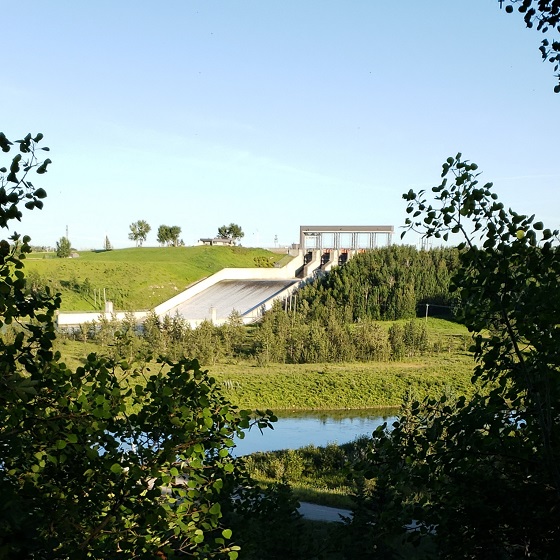
 Alberta1 day ago
Alberta1 day agoProvince considering new Red Deer River reservoir east of Red Deer
-

 MAiD2 days ago
MAiD2 days agoOver 40% of people euthanized in Ontario lived in poorest parts of the province: government data
-

 Addictions1 day ago
Addictions1 day agoBC Addictions Expert Questions Ties Between Safer Supply Advocates and For-Profit Companies


